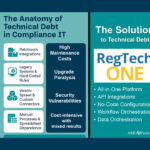
Oil theft and money laundering go hand in hand
Every day, Mexican criminal organizations perpetrate oil theft and money laundering by stealing thousands of barrels of heavy/sour crude from pipelines owned by Pemex, the state-owned energy company. Cartels then traffic stolen crude across the U.S. border under the guise of “waste oil” or other hazardous cargo. According to a FinCEN alert earlier this month, what begins as an act of oil theft morphs into a sophisticated money-laundering scheme—one that presents unique hurdles for commercial banks in U.S. regions that border Mexico–and well beyond.
Smuggling operations and the role of small refineries
Part of the complexity related to oil thefts is that Mexico legally exports large quantities of sour crude to U.S. refineries and simultaneously imports the refined oil and fuels. Cartels are taking advantage of this legal trade infrastructure to run massive thefts of Mexican heavy crude oil. According to FinCEN, cartel “huachicoleros” coordinate everything from pipeline tapping to hijacking fuel tanker trucks.
Once stolen, the heavy/sour crude funnels through a network of small, often family-owned U.S. oil outfits—some located in the Rio Grande Valley, the Permian Basin, or greater Houston. These U.S. entities purchase at steep discounts, then blend or re-label the product before moving cash back across the border via intercompany wires. For bankers, those complicit refineries pose a dual risk: they mask illicit proceeds in legitimate-looking trade, and they leverage established customer relationships to evade scrutiny.
U.S. refineries ship stolen oil all over the world
Often labeled as West Texas Intermediate (WTI) crude oil and other types of crude, complicit third-party brokers in the United States and in foreign jurisdictions facilitate the movement of the product around the world. Stolen crude oil is sold and shipped to oil and natural gas companies and refineries in Texas and the rest of the United States, as well as in Japan, India, Africa, and other foreign jurisdictions. FinCEN believes most of the purchasers are likely unaware of the illegitimate source of the crude oil.
Red-flag indicators of oil theft laundering, according to FinCEN
No single indicator will expose a sophisticated smuggling network, but combinations of warning signs should prompt deeper inquiry. FinCEN provides the following examples:
- A customer is a small U.S.-based oil and natural gas company, importing company, or freight company operating in states on the U.S. southwest border with transactional activity and profit margins that exceed the typical business profile of similar companies in their industries.
- A customer is a small U.S.-based oil and natural gas company that is selling WTI crude oil and other types of crude oil for significantly less than the market rate.23
- A customer is a small U.S.-based oil and natural gas company that is selling millions of dollars of crude oil per month but has no online presence or is using a basic website that appears designed to closely resemble major U.S. oil and natural gas companies’ websites in order to make their significant crude oil sales appear legitimate.
- A customer is a small U.S.-based oil and natural gas company that has a website indicating it is only a buyer or seller of crude oil, but the company is sending wire transfers to Mexican or U.S. companies for purchases of purported waste oil or other hazardous materials.
- A customer is a small U.S.-based oil and natural gas company that is suddenly purchasing waste oil or other hazardous materials from a singular or small number of Mexican and U.S. companies.
- A customer is a small U.S.-based oil and natural gas company that is sending wire transfers to Mexican or U.S. companies for waste oil or other hazardous materials without possessing the appropriate registrations with the U.S. Environmental Protection Agency (EPA).24
- A customer is a small U.S.-based oil and natural gas company that is sending wire transfers for waste oil or other hazardous materials to Mexican or U.S. companies that do not appear to be related to the oil and natural gas industry.
- A customer is a small U.S.-based oil and natural gas company that has a sudden and significant volume of transactional activity with one or a small number of Mexican or U.S. companies that have little to no online presence and displays other indicators of illicit shell company activity.
- A customer is a small U.S.-based oil and natural gas company that is receiving domestic and international wire transfers for invoices related to the sale of crude oil but sending wire transfers to Mexican or U.S. companies for invoices for the purchase of waste oil or other hazardous materials.
- A customer is a U.S. importing company that is receiving wire transfers from U.S.-based oil and natural gas companies and sending wire transfers to Mexican companies for invoices involving the U.S. importing company’s purchases of waste oil or other hazardous materials, despite the U.S. importing company lacking appropriate registrations from the EPA.25
- A customer is a U.S. importing company that is receiving wire transfers from a small U.S.-based oil and natural gas company for the sale of waste oil or other hazardous materials and then wiring those funds to a singular or small number of companies in Mexico.
- A customer claims to be a U.S.-based company involved in the import of waste oil or other hazardous materials, but upon further review, appears to be a shell company of a Mexican company.
- A customer is a U.S. company that is the ultimate consignee of purchases of waste oil or other hazardous materials but is registered to a residential address.
- A customer is a small U.S.-based oil and natural gas company, importing company, or freight company operating on the U.S. southwest border that is transacting with Mexican and U.S. companies and their beneficial owners associated with Cartel-related activity based on open-source reporting in Mexico, indictments, and OFAC designations and/or press releases.
Looking Ahead: A Risk-Based Response
Cartel-linked oil laundering thrives in the gray spaces between legitimate petroleum trade and financial regulation. By studying these red-flag indicators, compliance teams can adapt their existing frameworks to this evolving threat. In the oil-rich border region especially, staying attuned to refinery behaviors—and to the signals they send—will prove essential in disrupting one of the cartels’ most profitable money-laundering streams.


